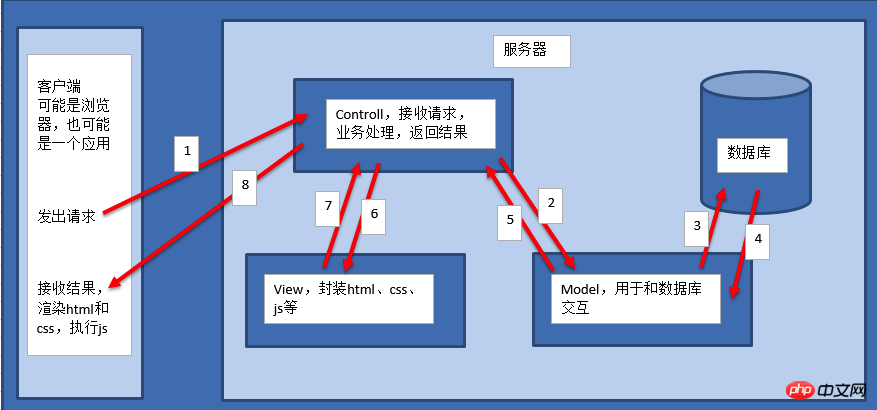Home >Backend Development >Python Tutorial >What is Django? A brief introduction to MVC and MVT patterns in Django (pictures and text)
This article brings you what is Django? A brief introduction to Django (pictures and text) has certain reference value. Friends in need can refer to it. I hope it will be helpful to you.
When I was learning Django before, I saw how to use the commands provided by others. I just used them if I didn’t know what they meant. The following is my own learning experience of learning Django. I hope it can help people who want to learn Django but don’t know how to start.
A brief introduction to Django
Features:
1) Weight Level framework
Compared with the Flask framework, Django natively provides numerous functional components to make development easier and faster.
Provide automated script tools for project engineering management
Database ORM support (Object Relational Mapping, English: Object Relational Mapping)
Template
Form
Admin management site
File management
Authentication authority
session mechanism
Cache
2) MVT mode
There is a programming model called MVC. Its core idea is division of labor and decoupling, so as to reduce coupling between different code blocks, enhance code scalability and portability, and achieve backward compatibility.
MVC’s full spelling is Model-View-Controller, which was first proposed by Trygve Reenskaug in 1978. It was invented by Xerox Palo Alto Research Center (Xerox PARC) in the 1980s for the programming language Smalltalk. Software design patterns are designed to apply traditional input, processing, and output tasks to graphical user interaction models. With the emergence of standard input and output devices, developers only need to focus on the analysis and implementation of business logic. It was later recommended as a design pattern for the Java EE platform of Oracle's Sun Company, and is welcomed by more and more developers using ColdFusion and PHP. Although the original division of labor is no longer used, the idea of this division of labor is still used and is widely used in software engineering. It is a typical and widely used software architecture model. Later, the idea of MVC was applied to Web development and was called the Web MVC framework.
MVC mode description


The above is the detailed content of What is Django? A brief introduction to MVC and MVT patterns in Django (pictures and text). For more information, please follow other related articles on the PHP Chinese website!